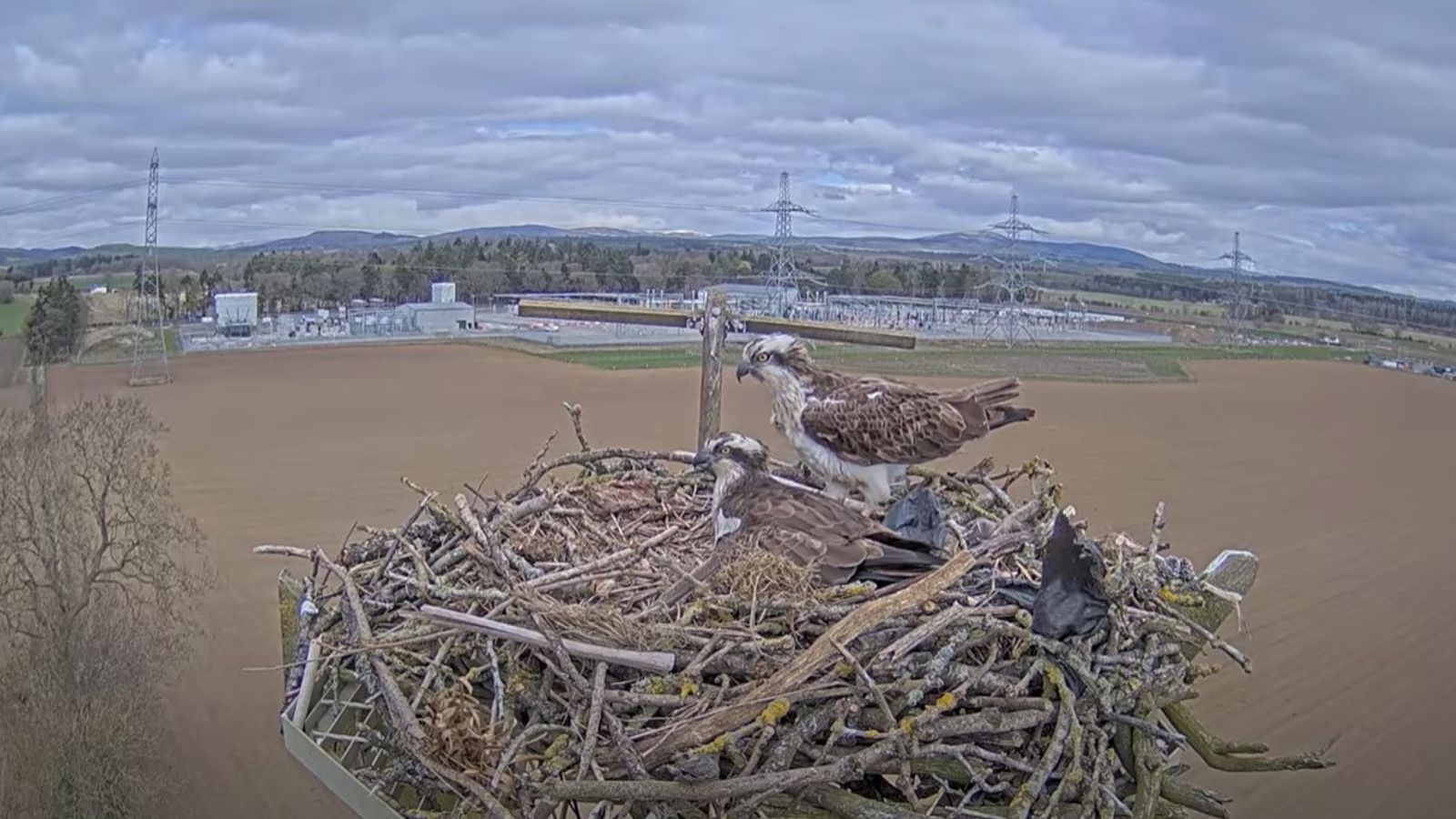Two ospreys have returned from Africa to their purpose-built nesting platform at a Perthshire electricity substation.
The birds of prey, named Harry and Flora by pupils at nearby Meigle Primary School, flew back to Alyth after migrating south for the winter.
Flora was spotted first in early April and was joined by Harry a few days later.
A live video feed, which attracted more than 2,000 subscribers last year, has been set up so avid birdwatchers can keep track of the pair.
Flora and Harry have previously reared three healthy chicks – Rowan, Holly and Bonnie – who successfully flew the nest last September.
The team at the Scottish and Southern Electricity Networks (SSEN) substation are hoping for more this year – with 17 osprey chicks successfully reared from the platform since it was built in 2014.
Read more:
Scottish osprey seen soaking up the sun in Barbados
Ospreys return from extinction in England and Wales
Dozens of birds of prey ‘illegally shot, poisoned or trapped in UK last year’
Police appeal after puppies and sprocker spaniel taken in separate thefts
Osprey seen soaking up the sun in Barbados after flying more than 4,000 miles from Renfrewshire in Scotland
‘Anxious’ wolf pack euthanised after death of leader at Camperdown Wildlife Centre in Dundee
The platform was built as an alternative home for the ospreys after the birds were spotted nesting at the top of one of SSEN Transmission’s 48-metre-high electricity towers.
As with previous years, the birds will be carefully monitored by an on-site ornithologist throughout the nesting season to ensure any construction work doesn’t cause disturbance to the ospreys.
Click to subscribe to ClimateCast with Tom Heap wherever you get your podcasts
Ewan Jelly, from SSEN, said: “They are firm favourites with the teams here working on the Alyth substation project, and it’s a real joy seeing them return to the nest and take to the skies as they hunt for fish in the nearby rivers and lochs.
“As ever we’ll continue to observe the birds closely to check on their progress and monitor for any signs of distress, and we look forward to hopefully welcoming more chicks again later this year.”






















